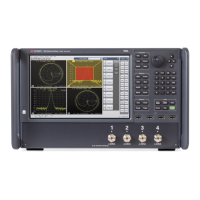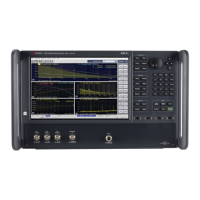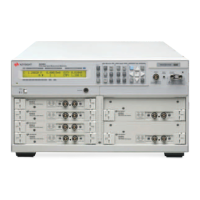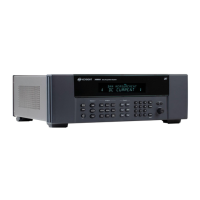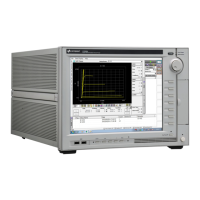D Measuremet Uncertainty Analysis - Instrument Accuracy Test
164 Keysight E4416A/E4417A Power Meters Service Guide
Hence: Measurement Accuracy = f(MV , TSE)
The Measurement Uncertainty is not calculated from different sensor and power
meter combinations, rather it is taken care of in the Customer Limit specification
setting. Hence using the same power meter and making measurements a number
of times will give us the uncertainty of the test station, without the uncertainty
associated with the meter itself. By taking n samples of the same meter/DUT in
effect we are averaging out the error associated with the DUT's measurement
capability leaving us with a raw test station uncertainty which is made up from
TSE and the DMM error, for example, the Measured Voltage (MV).
The method that is used to calculate the Measurement Uncertainty of our test
station is a combination of Type A and Type B analysis in line with the ISO
Expression of Measurement Uncertainty Guide.
Uncertainty Equation
TSE
The Measurement Uncertainty of the Measurement Accuracy is calculated from
testing the same DUT at 5dB step power level from
−25 dBm to +20 dBm.
Standard Uncertainty u(xi):
Table D-1 shows the standard deviation of the 30 readings from the DUT at
various power levels.
The measurement uncertainty only relates to the test station, in this case, a
power meter is the most accurate method of measuring power. Hence the
reason the DUT Measure component can be ignored in the measurement
equation. However, taking a number of measurements of the test system with
the same power meter, averages out the error resolution or minimize it to the
extent where the magnitude error is many times smaller than the station error.
u
2
MA() C
TSE
uTSE()
⋅
[]
2
C
MV
uMV()
⋅
[]
2
+=
